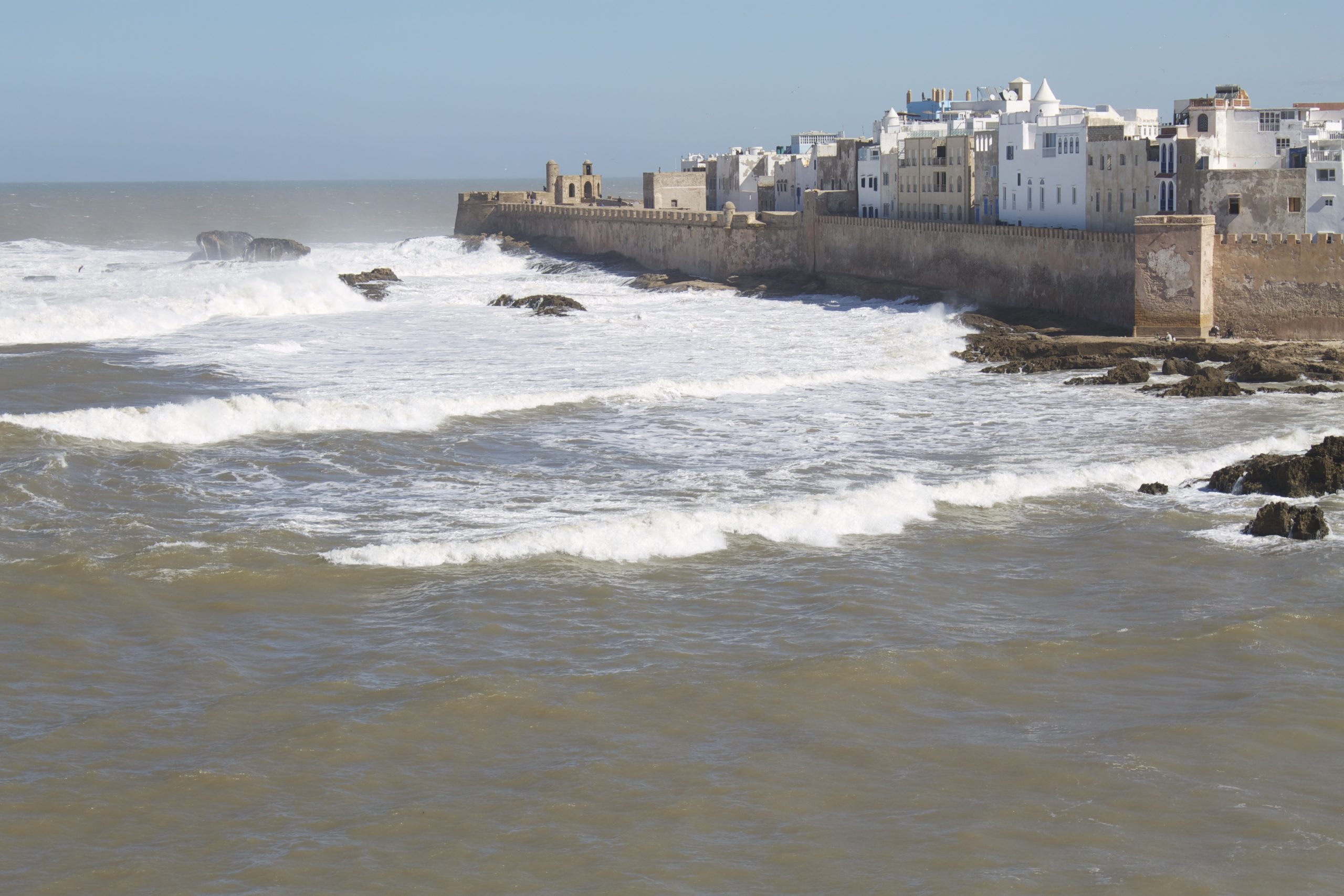11 North Africa & the Middle East
(NAME)
“THE MIDDLE OF WHAT? EAST OF WHERE? THE REGION’S VERY name is based on a European view of the world, and it is a European view of the region that shaped it. The Europeans used ink to draw lines on maps: they were lines that did not exist in reality and created some of the most artificial borders the world has seen. An attempt is now being made to redraw them in blood.”
- Tim Marshall, author of Prisoners of Geography
How do we define this region?
North Africa and the Middle East is a very complex region. Defining the region will take some doing, yet will not satisfy everyone. To begin, let’s simply create the acronym NAME. Also, let’s note and agree that some people, including some geographers, prefer a different name for the region – Southwest Asia and North Africa (SANA). It is a close distinction, but we are going with North Africa and the Middle East (NAME).
As noted in Chapter 2 on Regional Geography, in order to define regions of the world, geographers seek to find a set of similarities or locational characteristics that are shared across a compact area of countries. So, we want to identify was geographic characteristics (physical and human) are consistently similar across North Africa and the Middle East (NAME) as a means to define the region, but also as a threshold for determining which countries are in this region.
Religion is a key element of culture. For NAME, the dominant religion by far in Islam. The Muslim faith originated in the cities of Mecca and Medina in what is now Saudi Arabia. From there, this faith spread to many nearby lands – throughout the Middle East, across to North Africa, northeast to Central Asia. Islam also found new converts in distant places such as Indonesia; however, such distant places obviously are not part of our region NAME.
This region is recognized for its ancient civilization. In fact, the region’s Fertile Crescent is well-known as the origin of sedentary agriculture and consequential civilization. A key benefit of sedentary agriculture instead of hunter-gatherer food sources is that fewer people are needed to create food supply. This frees others for different tasks, including the development of innovations that advance civilization. The Fertile Crescent is a boomerang-shaped region where one shaft follows the paths of the Tigris and Euphrates Rivers and the other the path of the Nile River. These shafts are connected by land along the Mediterranean Sea. See the next chapter for more about the Fertile Crescent.
 The Fertile Crescent no longer dominates the world’s farming, though the paths of its rivers are essential in its countries. For instance, over 90% of Egyptians live within a few miles of the Nile River. Inhibiting farming across the region are the desert lands that predominate its physical geography. The world’s largest desert, the Sahara, covers North Africa. As part of the larger Arabian Desert, the Rub’ al Khali (in English, the “Empty Quarter”) is the world’s most stereotypical desert – hot, dry, sunny, sand dunes. In fact, it is one of the world’s largest areas of continuous sand, covering parts of Saudi Arabia, Yemen, Oman, and the United Arab Emirates (UAE). Iran’s Kavir Desert features little rain and intense heat. Its consequential evaporation leaves salt behind, creates a very inhospitable setting.
The Fertile Crescent no longer dominates the world’s farming, though the paths of its rivers are essential in its countries. For instance, over 90% of Egyptians live within a few miles of the Nile River. Inhibiting farming across the region are the desert lands that predominate its physical geography. The world’s largest desert, the Sahara, covers North Africa. As part of the larger Arabian Desert, the Rub’ al Khali (in English, the “Empty Quarter”) is the world’s most stereotypical desert – hot, dry, sunny, sand dunes. In fact, it is one of the world’s largest areas of continuous sand, covering parts of Saudi Arabia, Yemen, Oman, and the United Arab Emirates (UAE). Iran’s Kavir Desert features little rain and intense heat. Its consequential evaporation leaves salt behind, creates a very inhospitable setting.
 NAME is known for conflict and war, historically and in contemporary times. While the Ottoman Empire did rule much of the region from the 14th to 20th centuries, there were internal conflicts and well as battles between the Ottoman East and the Christian West. In recent years, we are well aware of the conflict and brief wars between Israel and its neighbors. The United States and its allies have invited Iraq twice, first in response to Iraq’s invasion of neighboring Kuwait and second in mistaken perception of Iraq’s weapons of mass destruction. Syria has been convulsed in civil war for a decade. Saudi Arabia is bombing Yemen. The Arab Spring of 2011 produced mass demonstrations and conflict in several states – Libya, Egypt, Morocco, Tunisia, and more. Terrorist organizations – al Qaeda and ISIS are centered in the Middle East. Israel maintains a tight control over (or oppresses, depending on your viewpoint) its Palestinian minority population.
NAME is known for conflict and war, historically and in contemporary times. While the Ottoman Empire did rule much of the region from the 14th to 20th centuries, there were internal conflicts and well as battles between the Ottoman East and the Christian West. In recent years, we are well aware of the conflict and brief wars between Israel and its neighbors. The United States and its allies have invited Iraq twice, first in response to Iraq’s invasion of neighboring Kuwait and second in mistaken perception of Iraq’s weapons of mass destruction. Syria has been convulsed in civil war for a decade. Saudi Arabia is bombing Yemen. The Arab Spring of 2011 produced mass demonstrations and conflict in several states – Libya, Egypt, Morocco, Tunisia, and more. Terrorist organizations – al Qaeda and ISIS are centered in the Middle East. Israel maintains a tight control over (or oppresses, depending on your viewpoint) its Palestinian minority population.

While there are a number of ethnic groups in North Africa and the Middle East, the region is dominated by Arab population, language, culture. Arabic is the uniform language throughout NAME. Across North Africa the largest ethnic group is Arab. The second most numerous people there are the Berbers, who are mainly Muslims. Middle Eastern countries that are clear counterexamples include Israel (Jews), Turkey (Turkish), and Iran (Persian).
Due to the significance of deserts throughout the region, a huge percentage of NAME’s population lives alongside water. In the few cases of rivers in NAME, people live next to rivers (again, the Nile). Otherwise, significant majorities of each country’s population live along the coastlines – Atlantic Ocean, Mediterranean Sea, Red Sea, Persian Gulf, Arabian Sea. Jordan nearly fails this standard, having only a tiny shoreline of the Red Sea at Aqaba. The disputed state of Palestine, like Jordan, borders the inland Dead Sea which does not provide the key coastal advantage of international trade. Chad, Mali, and Sudan are landlocked in North Africa.
 For centuries, most of NAME’s land featured modest economies. Coastal and/or non-desert areas did better and traded extensively. In modern days, NAME’s economic strength is overshadowed by oil and gas. Saudi Arabia features tremendous wealth, at least for the elite, due entirely to the petroleum industry. Qatar owes everything to oil. A side effect of the dominance of oil in small Middle Eastern countries is the in-migration of men to work in the oilfields, thereby greatly skewing the male-female ratio. Look to Chapter 18 for more than the skewed sex ratio.
For centuries, most of NAME’s land featured modest economies. Coastal and/or non-desert areas did better and traded extensively. In modern days, NAME’s economic strength is overshadowed by oil and gas. Saudi Arabia features tremendous wealth, at least for the elite, due entirely to the petroleum industry. Qatar owes everything to oil. A side effect of the dominance of oil in small Middle Eastern countries is the in-migration of men to work in the oilfields, thereby greatly skewing the male-female ratio. Look to Chapter 18 for more than the skewed sex ratio.
Now let’s combine these common and defining features of North Africa and the Middle East into an acronym to aid us in remembering the set, as highlighted in our purple ACRONYM box.
There are other possible combinations but I like this one best. Perhaps it even hints of conflict or war, one of its criteria.
So, we now seek to establish NAME as a region that features countries which match these seven characteristics. Well, let’s warn of trouble, for indeed some countries will have all of these criteria, yet other good candidates for inclusion will have several but not all seven. For instance, I can happily take Egypt as matching all seven criteria, but neighboring Israel has only four (not Muslim majority, not Arab majority, and little oil). Iraq fits all seven, but Jordan lacks oil and coastal position. Significantly, Turkey (Turkish not Arabic, not oil, not desert), and Iran (Persian not Arabic, diverse landscape though some desert) have noteworthy mismatches in ethnicity.
Additionally, we consider the factor of contiguity or at least adjacency. In order for a country to be part of a region, it must be contiguous to another country in the region. That is, it should border another country in the region. If an island country, then it should be a short stretch of water away from another country in the region.
And, there will be some geographers who will differ in their assessments of which countries fit in the region. Are the Central Asian countries in? Are Pakistan and Afghanistan in? What about African countries (Chad) that seem to be half in and half out of the region?
Furthermore, there is the “Where else?” question. If we wish to exclude a country from NAME, then is there another region where it would fit? For instance, it can be argued that Israel is not a good fit for NAME; however, there is no other region (Europe? No!) into which we can tuck Israel. Therefore, we must include Israel in NAME.
Okay, let’s do it.
IN – because the country matches at least five of our MAD WASP criteria.
- Mauritania, Morocco and disputed territory Western Sahara, Algeria, Tunisia, Libya, Egypt, Sudan, Jordan, Syria, Lebanon, (Palestine), Saudi Arabia, Yemen, Oman, Qatar, UAE, Bahrain, Iraq, Iran
IN – mainly fits, could it go elsewhere?
- Israel – as noted above, it’s IN
- Turkey – if ever admitted into the European Union, then Europe; otherwise NAME
- Niger – 80% desert, uranium, 1% Arabic, 99% Islam
- because 80% desert, let’s put it in NAME
Half IN, seeking a Solomonic solution – cut it in half
- Sudan – thank you
- Split itself in half – Sudan = IN, South Sudan = OUT
- Chad – northern is desert, Arabic, Islam; southern isn’t
- I want to cut it in half, like with Chad!
- Mali – NE is desert, SW is tropical forest
- Again, cut in half.
OUT – doesn’t fit well enough
- Canary Islands
- Not a country, but a territory of Spain
- In the Atlantic Ocean – west of Morocco, southwest of Spain
- Partly desert
- But close enough to Spain to count as part of Europe
- Madeira
- Like the Canary Islands, but part of Portugal
- – Djibouti – entirely arid and Muslim, but not Arab, no oil
- While its desert is in Africa, it’s not actually the Sahara Desert
- Okay in Sub-Saharan Africa
- – Eritrea
- Not even majority Islam
- – Pakistan
- Not Arabic, mixed landscape, not oil, has better fit in South Asia
- – Afghanistan
- Not Arabic, mixed landscape, not oil, has better fit in Central Asia
- – Turkmenistan
- Not Arabic, post-Soviet, has better fit in Central Asia
- Along with Uzbekistan, Tajikistan, Kyrgyzstan, Kazakhstan, Azerbaijan
- Not Arabic, post-Soviet, has better fit in Central Asia
So, we will use the acronym MAD WASP for the set of criteria that we will use to define this region NAME. We will understand that creating regions can be complicated and may produce differences of informed assessment.

Did you know?
My Turn!
CITED AND ADDITIONAL BIBLIOGRAPHY:
Nouhailler, Patrick. Morocco. February 26, 2014. Photo. https://www.flickr.com/photos/patrick_nouhailler/13711049295/. Attribution-ShareAlike 2.0 Generic (CC BY-SA 2.0)
Pensmasher. Insect. Noun Project. https://thenounproject.com/icon/insect-3822492/.



